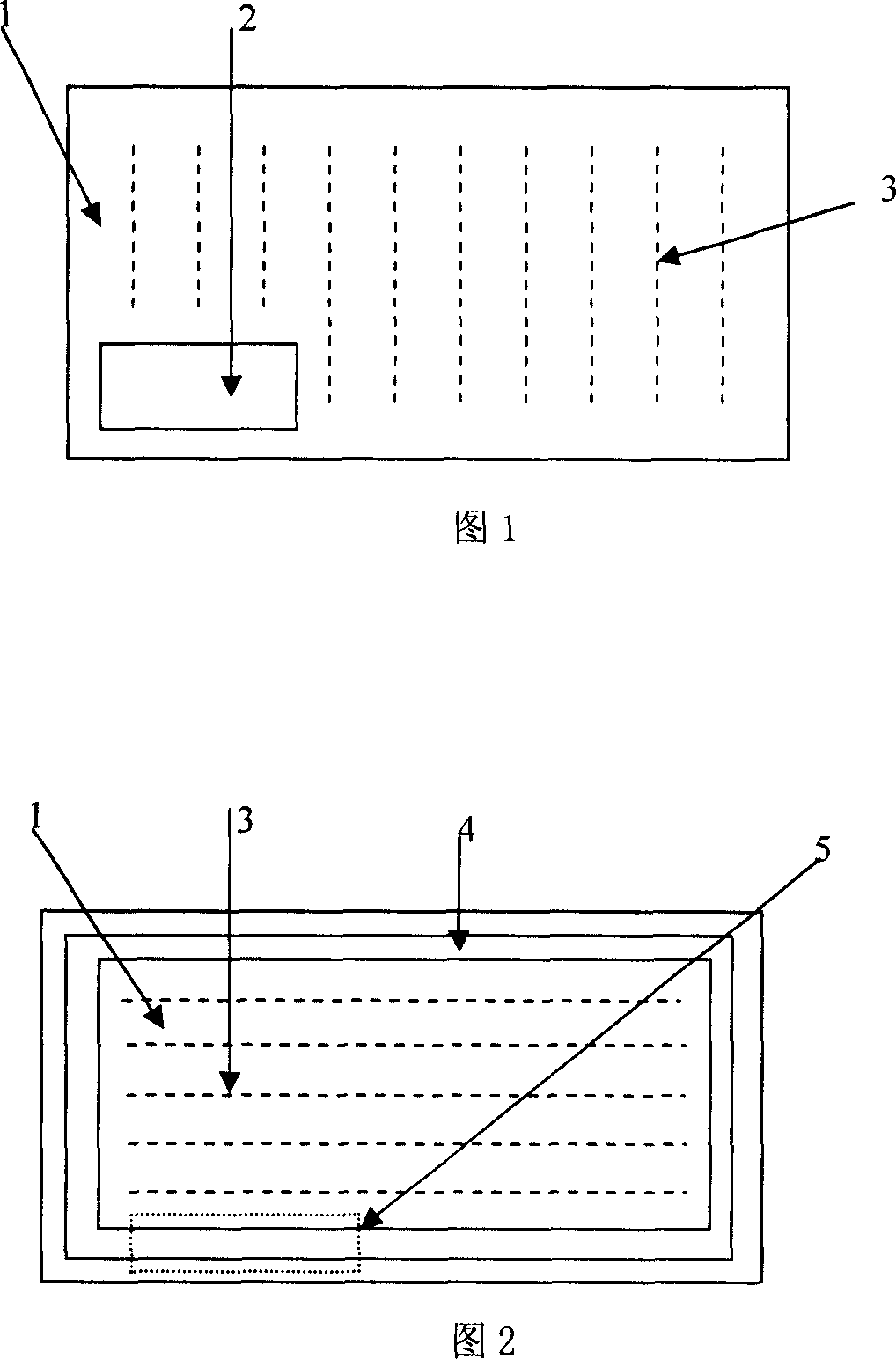Rice field breeding method for crayfish procambrarus clarkii
A technology of Procambarus clarkii and breeding methods, which is applied in botany equipment and methods, fish farming, rice cultivation, etc., can solve the problems of fertilizer loss, damage to rice seedlings, and insufficient bait, so as to reduce the loss of fertilizer and reduce the Cannibalism, the effect of increasing the production of aquaculture
- Summary
- Abstract
- Description
- Claims
- Application Information
AI Technical Summary
Problems solved by technology
Method used
Image
Examples
Embodiment 1
[0022] A paddy field cultivation method for Procambarus clarkii comprises the following steps: excavating an area at the water inlet end of the paddy field (1) accounting for 3% to 10% of the total area of the paddy field (1), with a depth of 0.5 to 1.0 meters and a width of 3 to 6 meters. Enclosing ditch (2), the ditch is surrounded by a 1 cm plastic net to form a breeding area, the fence is fixed with bamboo stakes, the distance between the bamboo stakes is 1.5 to 2 meters, and the stone ridges at the bottom of the net are buried in the mud 20 to 40 centimeters. The rice field outside the ditch (1) is plowed and leveled according to the rice planting requirements. The water inlet and the drain of the paddy field (1) need to establish anti-escape facilities to prevent predatory fish from entering and shrimp seedlings from escaping. Evenly excavate some furrows (3) in the paddy field (1) whose length is not less than 95% of the paddy field length or width, 10-20 cm wide, an...
Embodiment 2
[0024] A paddy field breeding method for Procambarus clarkii is as follows: the original ring ditch (4) in the paddy field (1) is used, and the ring ditch (4) must meet the requirements of a depth of 0.5 to 1.0 m and a width of not less than 3 m. A section of the water inlet end of the paddy field (1) is taken, and a breeding area (5) is surrounded by glass steel tiles, and the area of the breeding area (5) accounts for 3% to 15% of the total area of the paddy field (1). The bottom end of the fiberglass tile is inserted into the mud, the insertion depth is 30-40 cm, and the fiberglass tiles within 10-20 cm from the bottom surface are densely covered with 0.8-1.2 cm seedling holes. The fence is fixed with bamboo stakes, and the distance between the bamboo stakes is 1.5 to 2 meters. The rice field outside the ditch (1) is plowed and leveled according to the rice planting requirements. Anti-escape facilities need to be established at the water inlet and outlet of the paddy f...
Embodiment 3
[0026]A paddy field cultivation method for Procambarus clarkii comprises the following steps: excavating an area at the water inlet end of the paddy field (1) accounting for 3% to 10% of the total area of the paddy field (1), with a depth of 0.5 to 1.0 meters and a width of 3 to 6 meters. Enclosing ditch (2), surrounded by a hard plastic sheet with holes to form a breeding area, the plastic sheet is 30-60 centimeters higher than the paddy field, and another 20-40 cm is buried in the mud, 20 cm away from the bottom surface of the paddy field Scattered seedling holes of 0.8 to 1.2 cm are densely distributed within the range. The plastic sheet is fixed with bamboo stakes, and the distance between the bamboo stakes is 1.5 to 2 meters. Aquatic plants such as elodea, bitter grass, hydrilla and water peanuts are planted in the ditch, and the rice field (1) outside the ditch is plowed and leveled according to the rice planting requirements. Anti-escape facilities need to be establi...
PUM
 Login to View More
Login to View More Abstract
Description
Claims
Application Information
 Login to View More
Login to View More - R&D
- Intellectual Property
- Life Sciences
- Materials
- Tech Scout
- Unparalleled Data Quality
- Higher Quality Content
- 60% Fewer Hallucinations
Browse by: Latest US Patents, China's latest patents, Technical Efficacy Thesaurus, Application Domain, Technology Topic, Popular Technical Reports.
© 2025 PatSnap. All rights reserved.Legal|Privacy policy|Modern Slavery Act Transparency Statement|Sitemap|About US| Contact US: help@patsnap.com

